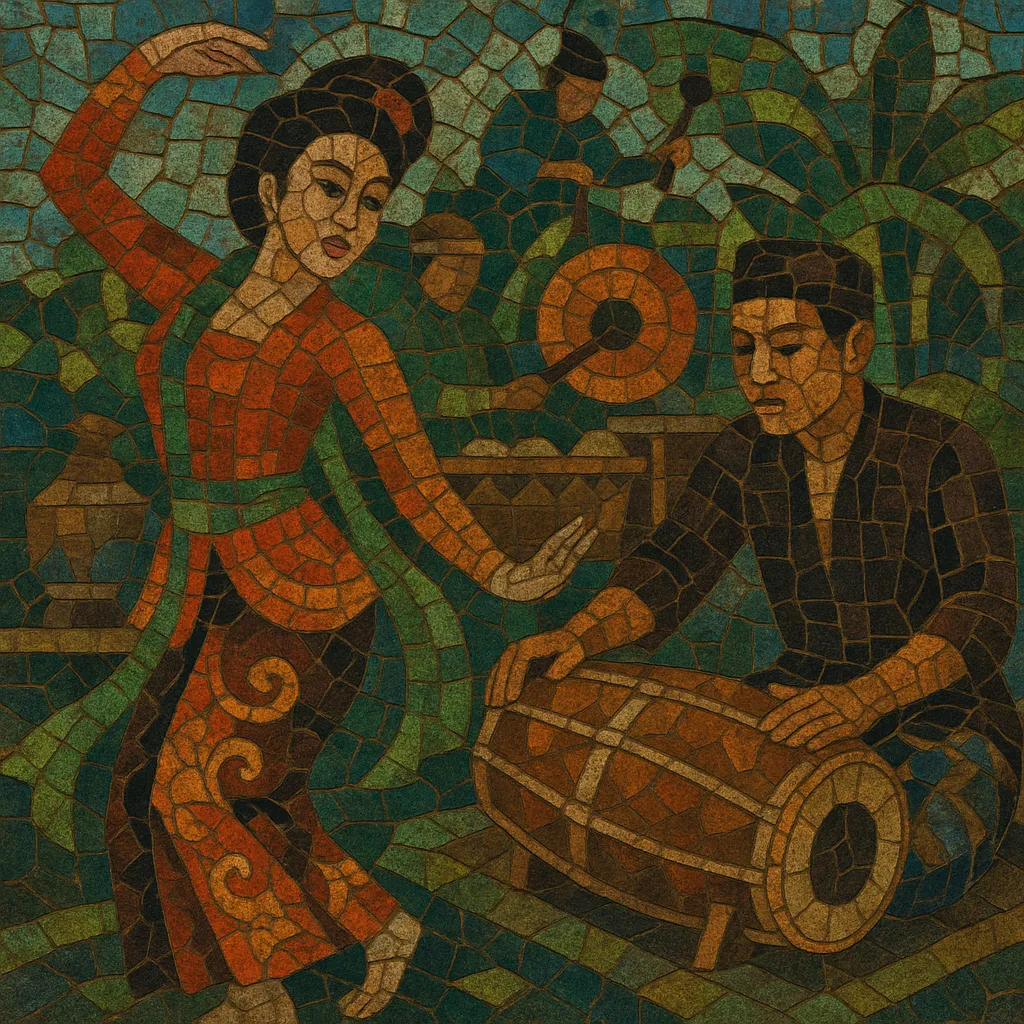Jaipongan is a high-energy Sundanese music-and-dance genre from West Java, Indonesia, built around virtuosic kendang (barrel drum) playing, interlocking gong-chime textures, and flirtatious, melismatic vocals by a sindén (female singer).
Developed in the late 1970s by composer-choreographer Gugum Gumbira, jaipongan modernized rural Sundanese traditions—especially ketuk tilu—by arranging them for stage performance and the cassette era. Its sound is drum-led, syncopated, and dance-forward, with bright gamelan timbres (saron, bonang, gong) complemented by suling (bamboo flute) and sometimes rebab. Lyrics, often in Sundanese, celebrate romance, playfulness, and everyday life, while the drumming cues dynamic shifts for the dancers.
Jaipongan emerged in Bandung, West Java, as Gugum Gumbira synthesized rural Sundanese performance practices—most notably the social dance music ketuk tilu—with urban presentation and new choreography. Drawing on gamelan idioms and the leadership role of the kendang, he shaped a drum-forward style that preserved local aesthetics while appealing to contemporary audiences.
The genre flourished with Indonesia’s cassette industry and regional broadcasting. Gumbira’s Jugala group, featuring standout sindén singers (such as Idjah Hadidjah), recorded and toured extensively, turning jaipongan into a regional sensation and a cultural emblem for West Java. The style’s lively rhythms, bright metallophones, and charismatic dance vocabulary made it ideal for public performances and festivals.
As jaipongan became a household name in Sunda, its rhythmic vocabulary—especially the energetic kendang jaipong approach—influenced adjacent popular forms and stage presentations. The style remains a cornerstone of Sundanese cultural identity, frequently taught in arts schools, performed at community celebrations, and referenced in pop Sunda and even modern stage fusions. Its enduring legacy lies in successfully translating village dance traditions into a modern, widely loved performance genre.


